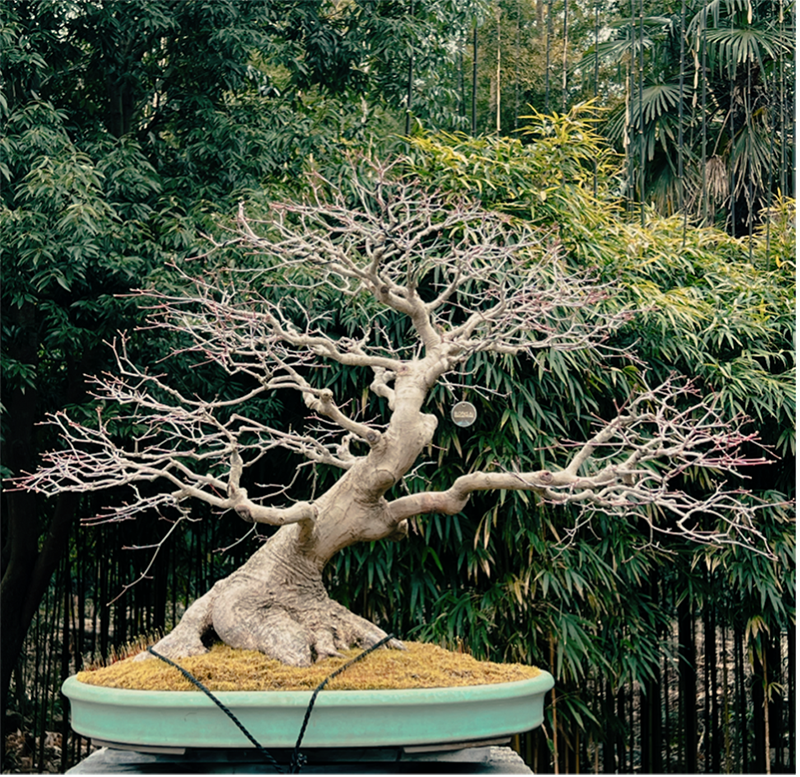March 22, 2024
One-Day Ibaraki Fun Tour
The Ibaraki Prefectural Government hosted a “One-Day Ibaraki Fun Tour” to increase the number of foreign tourists to the Prefecture. Ibaraki Prefecture invited diplomats from embassies in Japan and expatriates from global companies living in the Tokyo metropolitan area to participate in the tour, which was designed to raise awareness and enhance the image of the prefecture. To that end, the prefectural government encouraged tour participants to spread information through social media and other channels. The tour, accompanied by an English-speaking guide and interpreter, was held on February 29, 2024, with 25 participants from 11 countries.
Ari Yates
Temple University Japan Campus, Tiktok Team
Kodokan: Where the Student Became a Samurai
The educational heritage site “Kodokan” (Broad Path Hall) was founded by the 9th feudal lord Nariaki Tokugawa in 1841. He created this school as a way for other feudal lords’ children to achieve lifelong education through various topics of interest starting at the age of 15. Through the compound and the outside walkways of the school, you can smell the blooming plum blossoms Nariaki planned himself. Details representing the Tokugawa family are found everywhere. In the classrooms and private spaces, the tatami mat fringes display the Tokugawa family crest. The signs are easy to understand and many are in English. You will step back in time, feeling a sense of awe for a feudal student’s desire for knowledge in the late Edo Period.

Kairakuen: A Place to Relax and Unwind
Balancing Kodokan, Kairakuen was also created by Nariaki Tokugawa as a place for students to relax after a day of hard studying and training. It is especially popular during the spring as it is home to over 3000 plum trees of a hundred and fifty different varieties. A fine example of a traditional Japanese home, Kobuntei overlooks sweeping grass lawns and the serene Lake Senba. Pink blossoms against the blue sky make for a truly calming experience and will inspire a promise to return in the future.

Restaurant Iijima: Where the Locals Go to Enjoy Hitachi Beef
Restaurant Iijima is a local spot in the city of Mito where visitors can enjoy the must-try delicacy “Hitachi Beef”. Hitachi Beef comes from the renowned Japanese black cows, raised over 30 months and prized for their tenderness and taste. The restaurant features a cozy and calm interior with windows that allow plenty of natural light. Showcasing an array of distinctive flavors, the beef sampler dish is a must try! Accompanied with a delicious crème soup and tasty salad, Iijima is the perfect place to wind down after a day of exploring.Tree House Bonsai: Learning About the Complex Art of Bonsai
“Tree House Bonsai” is unique since it is the only Western-owned bonsai garden in Japan. Adam Jones, its founder, came to appreciate the art of bonsai and later became a certified bonsai artist. The entryway and surrounding landscapes are manicured perfectly to keep the focus on the bonsai and leave room for appreciation for the traditional architecture of the nearby home. Learning the complex art of bonsai is fascinating, and Adam will kindly explain any details regarding the maintenance and upkeep of the bonsai trees. The serenity of the gardens will make you want to linger more and promise to return soon.

Tsukuba Vineyard: A Friendly and Welcoming Place for Wine Tasting
Tsukuba Vineyard specializes in making high-quality, “fresh, daily” wine. Upon arrival, you will be greeted by the proprietor’s family and treated to delicious tapas that complement their 2023 Tsukuba Shokoshi Series of white, red, and rose wines. The selection of available wines will satisfy the most discerning palates and the atmosphere is calming and refreshing. Visit in the afternoon when the lighting is particularly splendid.Ibaraki Sense: Ibaraki Meets the Tokyo Ginza
If you don’t have time to visit Ibaraki, you can still experience it in the heart of Tokyo Ginza at “Ibaraki Sense”. The store has items from over 1,000 local Ibaraki vendors and even has products from the popular Nebaaru Kun, a very tall stick natto mascot. You will find yourself returning here to experience the splendors of Ibaraki while planning your next trip.
Haruka SHIGA
Temple University Japan Campus, Photography & Writing Team

The Beginning of Tokugawa

During the 6th and 7th centuries, Japan was predominantly controlled by aristocrats due to the need for protection, resulting in the employment of samurai as bodyguards. Their role was strictly limited to serving and protecting their lords. However, over time, some samurai started to exert influence beyond their original duties involving politics, while others sought to dominate their masters and control Japan themselves. By the end of the 12th century, one powerful samurai family asserted dominance over other samurai clans and established itself as the ruling authority. This family succeeded in obtaining the title of "shogun," which essentially made them the military leaders of Japan. Over time, the emperor's role became more symbolic, with the shogun assuming the central position in Japanese politics, which the Samurai era endured for an impressive span of 750 years.
Japan witnessed the rise of three distinct Shogun families, with the Tokugawa family emerging as the last ruling dynasty. Their era commenced in the early 17th century, precisely in 1603, when the inaugural shogun selected the Tokyo region, known as Edo, as the core of their military government. For 265 years, the title of shogun remained within the Tokugawa lineage. Eventually, Yoshinobu Tokugawa, the fifteenth and final shogun, decided to end the Samurai era and usher in modernity. He relinquished his political authority to the emperor, marking the epic event called the Meiji Restoration. Yoshinobu's father, Nariaki Tokugawa, hailed from Mito and was the progenitor of the Kodoukan school. The education provided at this institution profoundly influenced the last shogun's worldview, ultimately shaping his decision to embrace modernization. However, recognizing the urgent need to bolster Japan's strength, efforts were made to educate the populace and preserve human resources through institutions like schools.
Kodoukan

The Kodoukan school, established in 1841 by Nariaki Tokugawa, was the largest educational institution within the warrior clan during the Edo period. Renowned for its high-level lifelong educational system, Kodoukan admitted children of feudal warriors at the age of 15 and offered a diverse curriculum encompassing subjects such as medicine, pharmacy, astronomy, and martial arts. Unlike conventional schools, Kodoukan did not have a graduation requirement, allowing individuals of all ages, including adults over 40, to pursue further studies.
Surrounded by the cultural and traditional landscape of Japan, Kodoukan was designated as a Japanese Heritage site. Its architectural design was crafted to reflect Japan's rich culture, giving visitors an immersive experience steeped in history. As the Edo period drew to a close, the Mito domain, where Kodoukan was located, was embroiled in internal conflicts between the fundamentalist Tenguto and the pragmatic Shoseito factions. Following the Meiji Restoration, the domain was marginalized from the central government, resulting in the loss of some Kodoukan buildings during the factional conflicts known as the "party wars." Additionally, the government appropriated valuable materials housed within Kodoukan during the Meiji period.

Despite these challenges, visitors to Kodoukan today can still glimpse how young samurai received their education in the classrooms and training grounds during the Edo period. The spacious tatami rooms, adorned with open shoji (Japanese sliding doors) that offer tranquil views of sakura and ume (plum) flowers, provide a serene environment conducive to quiet contemplation and relaxation. Though Kodoukan may not boast an extensive array of facilities, its preservation of Edo-era architectural structures offers a window into Japan's feudal past, allowing visitors to connect with the country's rich cultural legacy.

Tatiana Meșter-Balan
Economic Department, Embassy of the Republic of Moldova
Of course, the ease of going on trips for one or more nights can vary depending on workload and diplomatic schedules. Generally speaking, I find it easier to travel during quieter diplomatic periods, which occur in August, and during public holidays. As for transportation, it would depend on the destination. As for me, I prefer public transit.
During my trip, I often appreciate having access to information about local attractions, transportation options, and dining recommendations. Additionally, services like luggage storage, assistance with translation, and guidance on cultural norms or etiquette can greatly enhance the experience for overseas visitors. Having multilingual staff available can also be beneficial for communication purposes.

Tom Whitson
Chair, Japan Market Expansion Competition (JMEC)
My wife and I prefer to travel in the spring or fall. For families with children, school schedules determine when they can travel. Since foreign schools have different schedules than Japanese schools, foreigners may have an opportunity to go to Ibaraki when Japanese students are in school. An important factor is entertainment for the children. Arts, crafts, and services have become popular “edu-tainment” activities.
These days, my Japan travels are influenced by friends who recommend places to go. I don’t use SNS or video sites. My wife handles research and hotel selection online. She looks for location, facilities (especially onsen), and food. She reads reviews and looks for discounts.








